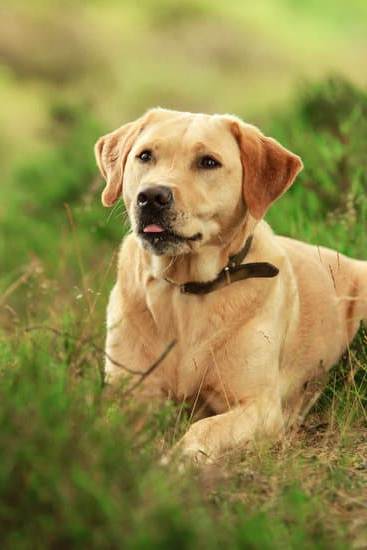Training an older dog in obedience is a crucial aspect of their overall well-being and relationship with their owner. While it may seem challenging to train an older dog, it is never too late to start. In this article, we will explore the importance of obedience training for older dogs, the benefits it provides, and how to set realistic expectations for the training process.
Many people mistakenly believe that once a dog reaches a certain age, training is no longer necessary or effective. However, obedience training is just as important for older dogs as it is for puppies. It helps maintain their mental sharpness, provides them with structure and boundaries, and strengthens the bond between the owner and their canine companion.
One of the key benefits of obedience training for older dogs is that it improves their overall behavior. By teaching them basic commands and proper manners, you can prevent or address any undesirable behaviors such as jumping on people or pulling on the leash during walks. Additionally, obedience training helps instill confidence in your older dog and reduces anxiety or fear-related issues they might be experiencing.
When embarking on the journey of training an older dog, it’s important to set realistic expectations. Older dogs may have physical limitations or pre-existing habits that can affect their learning ability. However, by understanding their individual needs and tailoring your approach accordingly, you can still achieve success in obedience training.
Assessing Your Older Dog’s Needs and Health
When it comes to training an older dog in obedience, it is essential to first assess your dog’s needs and health. This section will guide you through the process of evaluating your dog’s physical health and any limitations, considering their mental and emotional well-being, and understanding the impact of age on training.
Evaluating Your Dog’s Physical Health and Limitations
Before embarking on any obedience training program with your older dog, it is crucial to evaluate their physical health and any limitations they may have. Schedule a visit to the veterinarian for a comprehensive check-up to identify any underlying conditions that may impact their ability to participate in certain exercises or activities.
If your older dog has arthritis or other mobility issues, it is important to take these into consideration during training sessions. Adapt the exercises or provide modifications that are comfortable for them. For example, instead of expecting them to perform high jumps, you can introduce lower obstacles or focus on exercises that do not put excessive strain on their joints.
Considering Your Dog’s Mental and Emotional Well-Being
In addition to physical health, it is vital to consider your dog’s mental and emotional well-being when training them in obedience. Older dogs may have experienced various life events that could affect their behavior or response to training methods. Take the time to understand your dog’s history and any potential fears or anxieties they may have.
Tailor the training approach accordingly by using positive reinforcement techniques such as treats, praise, or toys as rewards for desired behaviors. Be patient with your older dog as they may take more time to process information compared to younger dogs. Training sessions should be kept short and enjoyable, focusing on building trust between you and your furry companion.
Understanding the Impact of Age on Training
As dogs age, there are natural changes that occur in their bodies and minds that can influence their ability to learn and respond to training. Cognitive decline or memory loss may affect their learning abilities. It is important to manage expectations and be patient with your older dog during training.
Additionally, older dogs may also have a reduced energy level or stamina compared to when they were younger. Take this into account when planning training sessions, ensuring that they are not too physically demanding for your dog. Adjust the duration and intensity of exercises according to their individual needs, allowing for rest breaks if necessary.
By taking the time to assess your older dog’s needs and health, you will lay a solid foundation for successful obedience training. Understanding any physical limitations, considering their mental well-being, and acknowledging age-related changes will enable you to tailor the training methods and set realistic expectations for both you and your furry friend.
Choosing the Right Training Method for your Older Dog
When it comes to training an older dog in obedience, choosing the right training method is crucial. Every dog is unique, and what works for one dog may not work for another. The key is to find a training technique that aligns with your older dog’s personality and learning style.
Comparing different training techniques and approaches
There are various training methods available, including positive reinforcement, clicker training, dominance-based methods, and more. It’s important to research and compare these techniques to understand which one would be the most effective for your older dog. Positive reinforcement techniques, which involve rewarding desired behaviors with treats or praise, tend to be popular choices because they create a positive learning experience for the dog.
Considering your older dog’s personality and learning style
Just like humans, dogs have their own unique personalities and learning styles. Some dogs may respond better to more structured training sessions with clear instructions, while others may thrive in a more relaxed environment where they can learn at their own pace. Take time to observe how your older dog responds to different stimuli and adjust your training methods accordingly.
Seeking professional guidance for specialized training needs
If you’re unsure about which training method would be most effective for your older dog or if you’re dealing with specific behavioral challenges, seeking professional guidance from a certified dog trainer or behaviorist is highly recommended. These professionals have experience working with dogs of all ages and can provide personalized advice tailored to your older dog’s specific needs.
Remember that the key to successful obedience training is consistent practice and patience. Be understanding of any limitations or challenges your older dog may have and adapt the training exercises accordingly. By choosing the right training method for your older dog, you’ll set them up for success on their obedience journey while building a stronger bond with them along the way.
Establishing Trust and Bonding with Your Older Dog
In order to have a successful obedience training experience with your older dog, it is crucial to establish trust and build a strong bond. This section will discuss the importance of building a positive and trusting relationship, using consistent and gentle communication techniques, and addressing any existing challenges or negative behaviors.
Establishing trust is essential for effective training. Older dogs may have had previous experiences that can affect their level of trust in humans. It is important to approach training with patience, understanding, and kindness. Building trust involves spending quality time with your older dog, providing praise and rewards for good behavior, and avoiding any punishment or harsh methods that can break their trust.
Consistent communication is key when working with an older dog. They thrive on routine and structure, so it’s important to use clear and consistent commands during training sessions. Use positive reinforcement techniques such as treats or verbal praise when your older dog responds correctly to commands. This will not only strengthen the bond between you but also motivate them to continue learning.
Addressing existing challenges or negative behaviors is also crucial for establishing trust. Older dogs may have certain fears or anxiety-related issues that need to be addressed before effective training can occur.
For example, if your older dog has separation anxiety, it is important to work on desensitizing them to being alone gradually before moving on to obedience commands. By addressing these challenges head-on with patience and understanding, you can help your older dog feel more comfortable during training sessions and strengthen the bond between you.
| Building Trust: | Importance of Consistent Communication: | Addressing Challenges: |
|---|---|---|
| – Spending quality time | – Using clear and consistent commands | – Addressing fears or negative behaviors |
| – Providing praise and rewards | – Positive reinforcement techniques | – Working on desensitization gradually |
| – Avoiding punishment or harsh methods | – Strengthening the bond between you | – Patience and understanding during training |
Basic Obedience Exercises for Older Dogs
Once you have assessed your older dog’s needs and chosen the right training method, it’s time to dive into the actual obedience exercises. These exercises serve as the foundation for your dog’s training journey and help establish good habits and behavior. Here are some basic obedience exercises that are particularly effective for older dogs:
- Sit: Teaching your older dog to sit on command is a fundamental exercise that can be easily learned by most dogs. Start by holding a treat close to your dog’s nose and move it upwards, prompting their natural inclination to lower their rear end. As they follow the treat with their eyes, their body will naturally go into a sitting position.
At this point, say “sit” and reward them with the treat. Repeat this exercise several times until they start associating the word “sit” with the action. - Stay: This exercise is crucial for teaching impulse control and establishing boundaries. Begin by asking your older dog to sit or lie down. Once they are in position, hold up your palm as if signaling stop and say “stay.” Take a step back, rewarding them with verbal praise or a treat if they stay in place. Gradually increase the distance and duration of their stay over time.
- Come: Teaching your older dog to come when called is an essential safety skill that can prevent accidents and ensure better control during walks or outings. Start by attaching a long leash to your dog’s collar so you have control over their movements. Crouch down, open your arms wide, and excitedly say “come.” in an inviting tone while gently tugging on the leash towards you. When they reach you, reward them with praise or treats.
Remember to utilize positive reinforcement techniques throughout these exercises. Offer plenty of verbal praise, treats, or even playtime as rewards for successfully following commands. Additionally, patience is key during the learning process as older dogs may take a bit longer to grasp new concepts. By remaining persistent and encouraging, you can help your older dog develop a strong foundation in obedience.
Addressing Age-related Challenges during Training
Training an older dog in obedience can come with unique challenges that may not be present when training a younger dog. As dogs age, they may experience physical limitations such as arthritis or mobility issues, as well as cognitive changes that can affect their ability to learn. However, with some adaptations and understanding, these challenges can be overcome to ensure a successful training experience for both the dog and the owner.
One of the first steps in addressing age-related challenges during training is to adapt exercises to accommodate any physical limitations your older dog may have. This may involve using props or equipment such as ramps or mats to assist them in performing certain tasks. For example, if your dog has difficulty sitting or lying down due to arthritis, you can use a raised platform or cushioned surface to make it more comfortable for them.
Furthermore, it’s crucial to take into account any pain or discomfort your dog may be experiencing. If your older dog shows signs of fatigue during training sessions, it’s important to provide them with plenty of breaks and not push them beyond their limits. It’s also helpful to consult with your veterinarian for guidance on managing any underlying health conditions that may impact training sessions.
In addition to physical challenges, older dogs may also experience cognitive changes that can affect their ability to learn new commands or retain information. These changes could include memory loss or decreased problem-solving skills. To help overcome these obstacles, it’s important to keep training sessions short and focused, utilizing repetition and reinforcement techniques consistently.
Overall, addressing age-related challenges during training requires patience, understanding, and adaptability from the owner. By making necessary adjustments based on your dog’s individual needs and limitations, you can create a positive and rewarding training experience for both you and your older furry companion.
| Age-Related Challenge | Approach |
|---|---|
| Physical limitations | Adapt exercises, use props or equipment, provide breaks |
| Cognitive changes | Shorten sessions, repetition and reinforcement techniques |
Building on Obedience with Advanced Training Techniques
Once your older dog has mastered the foundational obedience commands, you can begin to expand their training repertoire by introducing more complex exercises. These advanced training techniques will not only challenge your dog mentally and physically, but they will also strengthen the bond between you and your furry companion.
One advanced obedience exercise that you can teach your older dog is the “leave it” command. This command is incredibly useful in various situations, especially when it comes to preventing your dog from picking up or eating something harmful. Start by placing a treat on the ground and covering it with your hand.
Say “leave it” firmly and wait for your dog to stop trying to get the treat. Once they do, reward them with a different treat or praise. Gradually increase the difficulty by making the covered treat more visible or using items of higher value.
Another advanced training technique to consider is teaching your older dog to walk politely on a loose leash. This skill will make walks more enjoyable for both you and your dog. Begin by keeping your dog on a short leash and rewarding them when they stay by your side without pulling. If they start pulling, immediately stop walking and wait for them to return to your side before continuing. Consistency is key in reaffirming this behavior.
In addition to advanced obedience exercises, incorporating mental stimulation activities into your older dog’s training routine is essential for their continued growth. Puzzle toys, scent work, or interactive feeding games can provide mental challenges while keeping them entertained and engaged. These activities not only keep their minds sharp but also contribute to reducing boredom and destructive behaviors.
Remember that patience and persistence are crucial during this phase of training an older dog in obedience. It is normal for progress to take longer as compared to younger dogs, so celebrate even small victories along the way. Building on their existing knowledge and gradually introducing more complex exercises will help keep both you and your furry friend motivated and excited about their training.
By incorporating advanced training techniques, you can take your older dog’s obedience skills to the next level. These exercises and mental stimulation activities will not only provide additional mental and physical exercise but also deepen the bond between you and your loyal companion.
Overcoming Training Challenges and Perseverance
Training an older dog in obedience can come with its fair share of challenges. It’s important to remember that every dog is unique and may respond differently to training methods. However, with patience, consistency, and perseverance, you can overcome these challenges and achieve success in training your older dog.
One common challenge during training is facing resistance or stubbornness from your older dog. It’s not uncommon for dogs to develop a set routine or behavior patterns over the years, making it difficult for them to adjust to new commands or behaviors.
If your dog resists training initially, keep in mind that this is a normal part of the process. Stay consistent with your approach, offer rewards and positive reinforcement when your dog responds correctly, and gradually increase the difficulty level as they progress.
Another challenge you may encounter is managing distractions during training sessions. Older dogs may be more easily distracted by their surroundings or have a shorter attention span compared to younger dogs. To address this challenge, consider choosing a quiet and low-distraction area for training sessions.
Start with small durations of focus and gradually increase the length of time as your dog becomes more comfortable and attentive. Additionally, be patient and understanding if your older dog gets easily distracted – take breaks if needed and resume when they are more focused.
Understanding that progress may be slower with an older dog is crucial in overcoming training challenges. As dogs age, their cognitive abilities may decline, making it harder for them to grasp new concepts or learn complex commands. Adjusting your expectations accordingly will help you maintain a positive mindset throughout the process. Celebrate even small victories along the way as they contribute to the overall progress of your older dog’s obedience training.
Remember that perseverance is key when facing any challenges during training. There will inevitably be setbacks along the way, but staying consistent in your efforts will pay off in the long run. Continually reassessing both yours and your dog’s needs will help you tailor the training plan to suit their abilities and strengths. By maintaining a positive attitude, practicing consistency, and being patient with your older dog, you can overcome challenges and achieve success in their obedience training journey.
Conclusion
In conclusion, training an older dog in obedience is a rewarding and worthwhile endeavor. It is never too late to start training, and the benefits are numerous. Obedience training not only enhances your dog’s behavior and fosters a deeper bond between you and your furry companion but also improves their overall well-being.
Through the process of obedience training, you have the opportunity to assess your older dog’s needs and health. By understanding their physical limitations, mental well-being, and age-related challenges, you can tailor the training approach to suit their specific requirements. This personalized approach ensures that your older dog receives the attention and care they need throughout the training journey.
Choosing the right training method for your older dog is crucial. By comparing different techniques and considering their personality and learning style, you can find an approach that works best for them. Seeking professional guidance for specialized training needs can also be beneficial in ensuring that your older dog receives appropriate support.
Establishing trust and bonding with your older dog is essential during obedience training. By using consistent and gentle communication techniques, you build a positive relationship based on trust. Addressing any existing challenges or negative behaviors will further strengthen this bond by fostering understanding between you and your furry friend.
As you progress through basic obedience exercises with your older dog, it is important to remain patient and encourage persistence. Positive reinforcement techniques will be particularly effective in reinforcing desired behaviors while providing encouragement along the way.
Addressing age-related challenges during training requires adaptability. Accommodating physical limitations such as arthritis or mobility issues ensures that your dog remains comfortable during sessions. Overcoming cognitive changes caused by aging may require additional patience and creativity in finding effective teaching methods.
Once basic commands are mastered, advanced obedience training techniques can be introduced to expand your older dog’s repertoire of skills. Introducing more complex exercises helps stimulate their minds while further strengthening the bond between you.
Throughout this journey of obedience training for an older dog, setbacks and resistance may occur. However, remaining consistent and dedicated while celebrating small victories will help you stay motivated and persevere. Remember that training is a lifelong process, and ongoing training and bonding with your older dog will ensure continued success.
Frequently Asked Questions
Can older dogs still be trained?
Yes, older dogs can still be trained. While it is true that puppies and younger dogs tend to be more receptive to training due to their higher energy levels and natural ability to learn, older dogs are certainly capable of learning new things as well.
It may take a little more time and patience, but with proper training techniques and consistency, older dogs can learn new commands, behaviors, and even overcome certain habits or fears. Age should not be a limiting factor when it comes to training dogs.
Is it worth training an older dog?
Training an older dog is definitely worth it. Whether you have recently adopted a senior dog or have had your furry companion for many years, training can significantly improve their quality of life and strengthen the bond between you both. Training offers mental stimulation for older dogs, helping to keep their minds active and prevent cognitive decline.
Additionally, it allows for better control and communication with your dog, ensuring their safety in various situations. With patience and positive reinforcement methods, training an older dog can bring about positive changes that enhance their overall well-being.
Is it harder to train a dog the older it gets?
It might be slightly more challenging to train an older dog compared to a younger one but not necessarily because they are less capable of learning. As dogs age, they may develop certain habits or behavioral patterns that may need to be addressed during training. For example, an older dog may have spent years pulling on the leash during walks without being corrected, making breaking this habit require time and consistent effort.
Moreover, if an older dog has never undergone any formal training before, they may simply be unaccustomed to the process initially. However, many adult dogs can still learn new things with appropriate training techniques tailored to their age and abilities. Patience, consistency, positive reinforcement methods, and understanding the individual needs of the specific dog are crucial when training older dogs successfully

Welcome to the blog! I am a professional dog trainer and have been working with dogs for many years. In this blog, I will be discussing various topics related to dog training, including tips, tricks, and advice. I hope you find this information helpful and informative. Thanks for reading!





